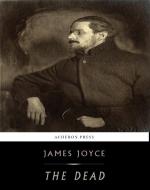|
This section contains 2,004 words (approx. 7 pages at 300 words per page) |

|
SOURCE: "Structure and Sympathy in Joyce's 'The Dead,'" in PMLA, Vol. LXXV, No. 9, March, 1960, pp. 149-51.
In the following essay, Loomis interprets the structure of "The Dead" as a vehicle for reader sympathy.
James Joyce's "The Dead" culminates in Gabriel Conroy's timeless moment of almost supreme vision. The fragments of his life's experience, of the epitomizing experiences of one evening in particular, are fused together into a whole: "self-bounded and self-contained upon the immeasurable background of space and time."1 Initiated by a moment of deep, if localized, sympathy, his vision and his sympathy expand together to include not only himself, Gretta, and his aunts, but all Ireland, and, with the words "all the living and all the dead," all humanity.
Gabriel's epiphany manifests Joyce's fundamental belief that true, objective perception will lead to true, objective sympathy; such perception and such sympathy, however, ultimately defy intellectual analysis. Joyce...
|
This section contains 2,004 words (approx. 7 pages at 300 words per page) |

|


